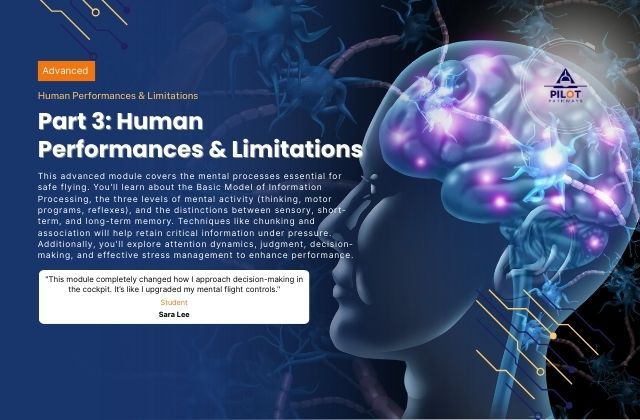
Part 3: Human Performance and Limitation
You’ll learn how pilots receive, filter, and act on information through the Basic Model of Information Processing, and the three levels of mental activity—thinking, motor programmes, and reflexes.
Instructor
What Will You Learn?
About This Course
In this advanced module, you’ll explore the mental processes that underpin every safe flight.
You’ll learn how pilots receive, filter, and act on information through the Basic Model of Information Processing, and the three levels of mental activity—thinking, motor programmes, and reflexes. You’ll understand the differences between sensory, short-term, and long-term memory, and how to use chunking and association to retain crucial information in high-pressure moments.
You’ll discover how attention works, and how selective and divided attention affect cockpit performance. You’ll refine your judgment and decision-making skills through structured processes, and you’ll learn proven methods to manage stress—turning it from a hazard into a performance enhancer.
Curriculum Overview
This course includes 3 modules, 6 lessons, and 2:00 hours of materials.
By the end of Part 3, you will not only understand how your mind functions in flight but also how to sharpen it for maximum safety and efficiency. You’ll leave with the ability to think clearly under stress, make confident decisions, and maintain focus when it matters most.
Before you begin the quiz, please write your full name before start the quiz. This helps us know who you are and keep track of your progress.
Module Coverage:
1. Part 1: General Human Performance & Limitations
2. Part 2: Human body’s response to altitude, stress, and acceleration forces
3. Part 3: Nervous, respiratory, and circulatory systems in flight, and physiological dangers in aviation
Objective:
Demonstrate your ability to apply knowledge of human performance and limitations to real-world aviation scenarios, ensuring safety, efficiency, and sound decision-making in the cockpit.
1. Part 1 – Scenario-Based Application (60%)
You will be given three flight scenarios. For each, identify:
1. The human performance limitation involved.
2. The underlying physiological or psychological cause.
3. The preventive actions or solutions a pilot should take.
Scenario A – High-Altitude Cruise
At FL350, the co-pilot reports feeling lightheaded and slow to respond. The cabin pressurization system appears to be functioning normally.
Scenario B – Busy Approach in Bad Weather
The pilot is managing multiple ATC instructions while flying through turbulence and heavy rain. They begin missing minor ATC calls and feel their heart rate increasing.
Scenario C – Tight Turn During Airshow Practice
The aircraft is subjected to high G-forces. The pilot experiences tunnel vision and feels like they might black out.
2. Part 2 – Short Answer Questions (30%)
Answer the following in 3–4 sentences each:
- Explain how hypoxia affects pilot performance and how to prevent it.
- Describe how the nervous system assists a pilot in maintaining control of the aircraft.
- Identify two types of stress in aviation and give one method to manage each.
- Explain the difference between acute and chronic fatigue in pilots.
3. Part 3 – Self-Reflection (10%)
In 200–300 words, reflect on which human performance limitation you believe is most dangerous in aviation and why. Support your answer with one real-world example (can be historical or hypothetical).
Course Certificate

Course Specifications

.png)
.png)


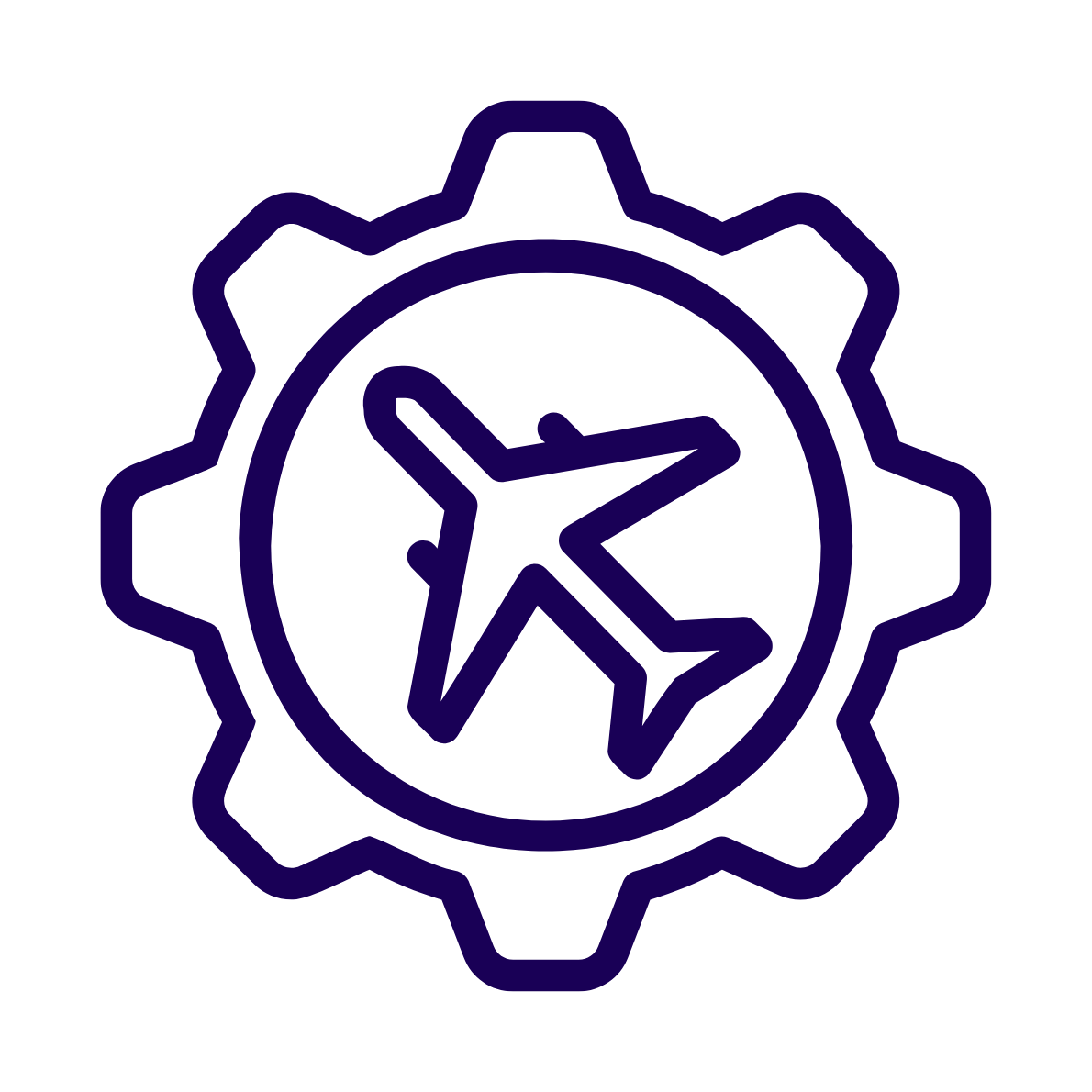
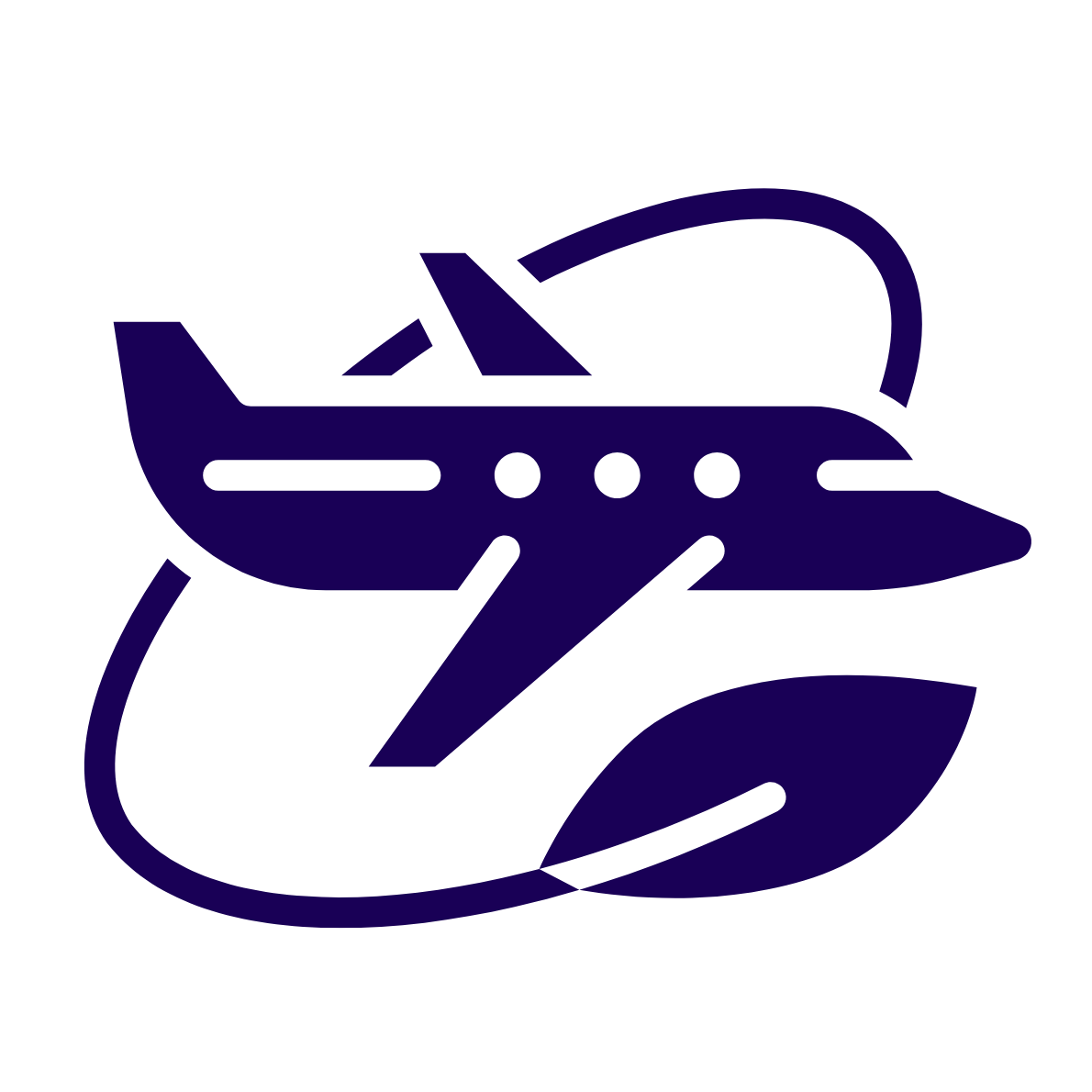
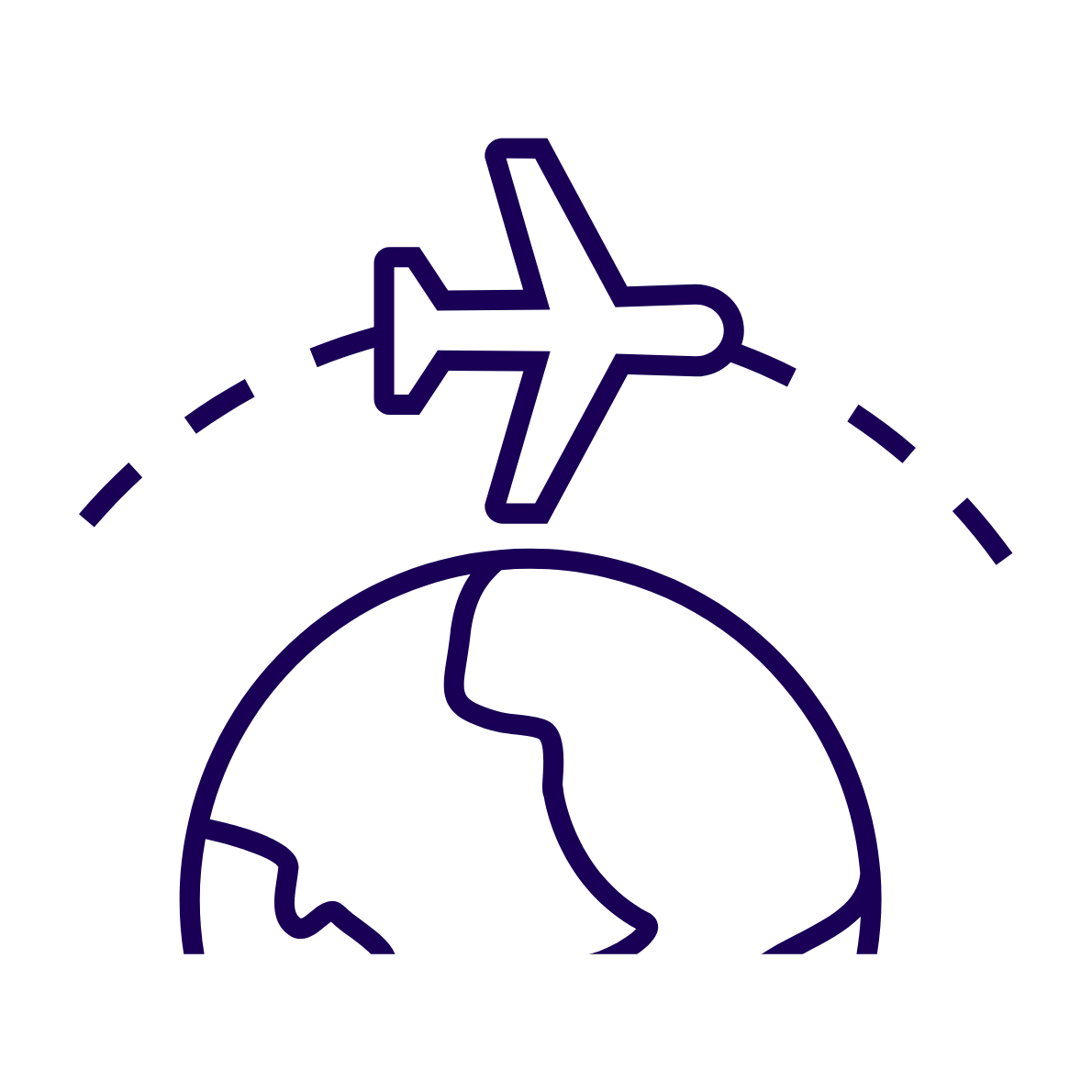
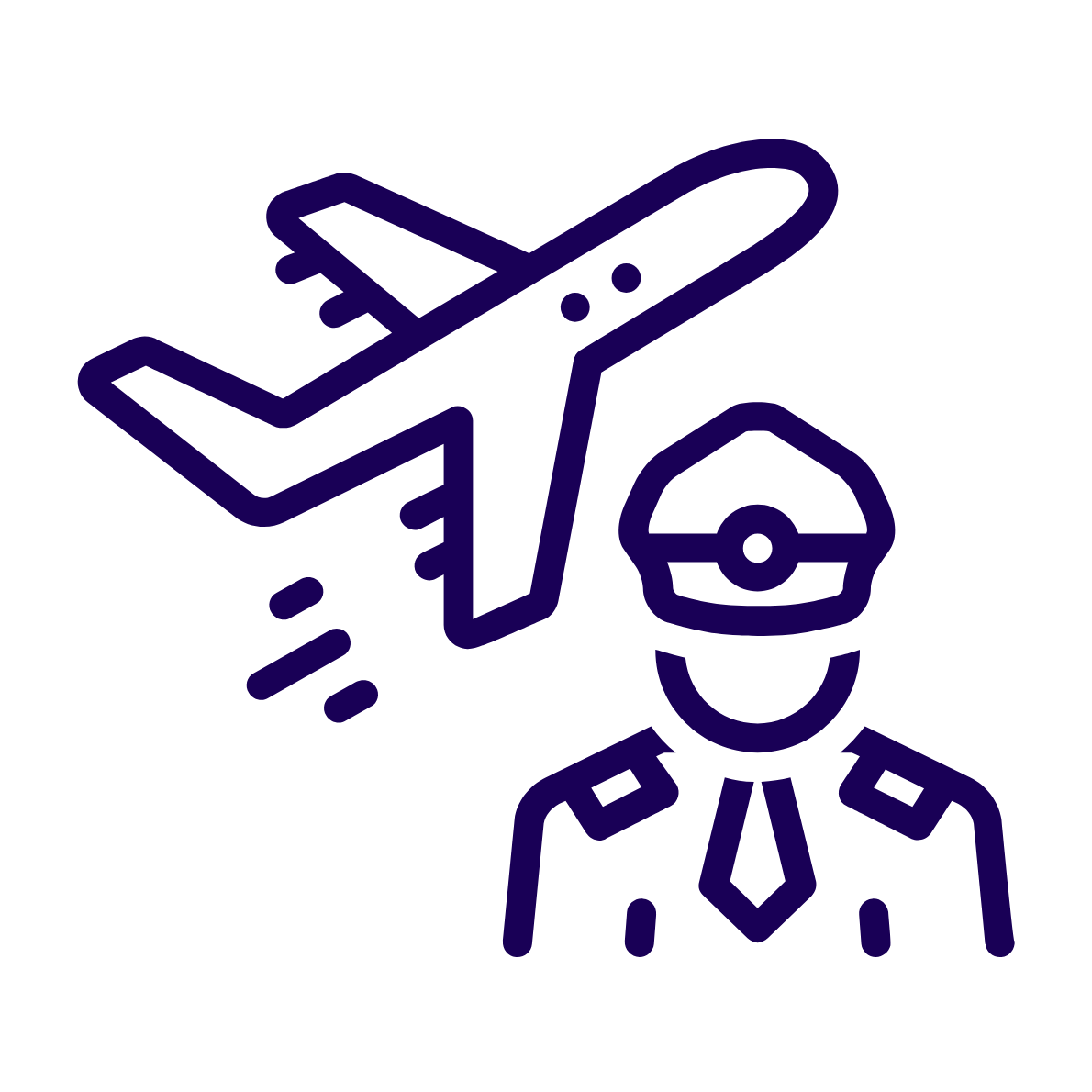
.jpg)
.jpg)



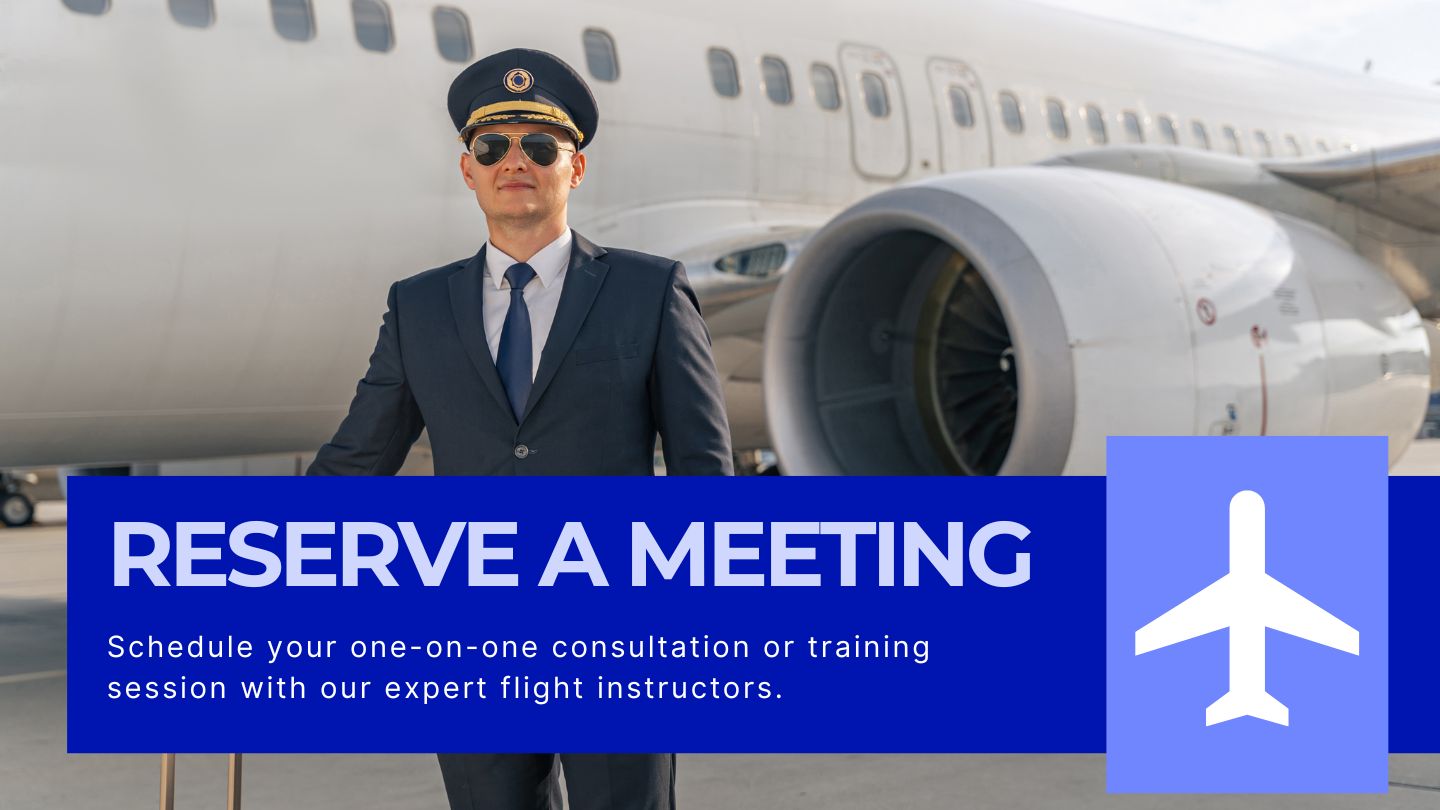
.jpg)
Reply to Comment